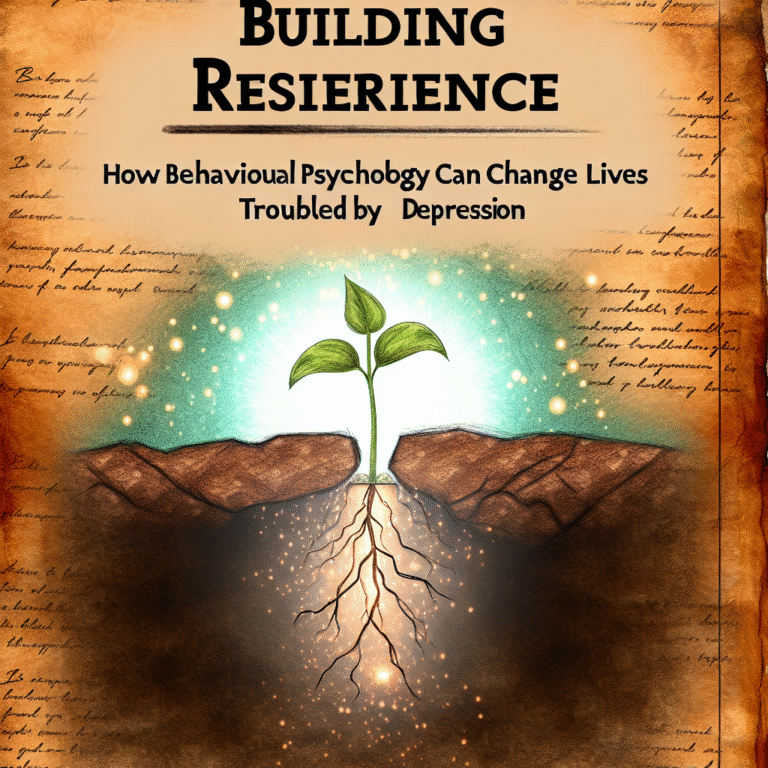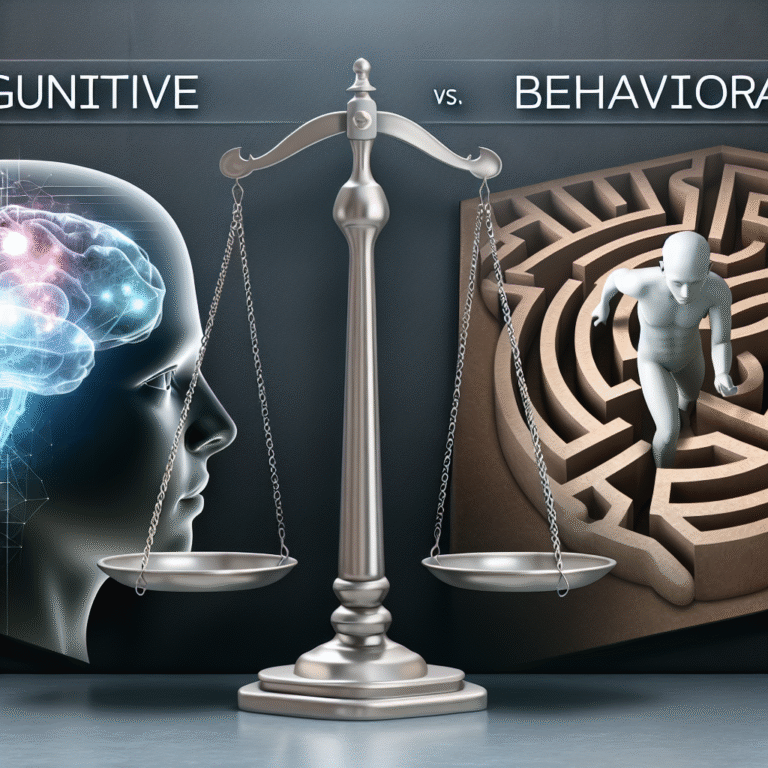
The Invisible Influencers: How Environment Shapes Behavior in Surprising Ways
Introduction
Imagine walking into a room; the first thing you notice is the scent of lavender, the soft lighting, and the soothing music playing gently in the background. You might not realize it, but all these elements significantly influence how you feel and behave. This phenomenon is a prime example of The Invisible Influencers: How Environment Shapes Behavior in Surprising Ways. From the colors that surround us to the arrangement of furniture in our workplaces, our environments subtly guide our decisions, attitudes, and overall behavior. Understanding these unseen forces can empower us to create spaces that foster happiness, productivity, and well-being.
In this article, we will delve into the multifaceted layers of how our environments shape our behaviors in ways that are often overlooked. The impact of both physical and social environments is profound, influencing everything from consumer choices to interpersonal relationships. By the end of this exploration, you’ll not only comprehend these invisible influencers but also discover actionable insights for applying this knowledge in your daily life.
The Science Behind Environmental Influence
The Psychological Framework
Behavioral psychology provides a solid foundation for understanding how our environments impact us. At its core, our environment serves as a context for behavior, shaping our perceptions and interactions.
- Behaviorism: This theory posits that all behaviors are acquired through conditioning. Environmental stimuli play a crucial role here.
- Cognitive Psychology: This branch emphasizes how environments affect our thinking processes and decision-making.
Key Elements of Environmental Influence
Several components of our surroundings profoundly affect our actions and decisions:
- Physical Space: The design and layout of a space can influence productivity, creativity, and even stress levels.
- Social Settings: The presence of others shapes our behaviors significantly, often leading to conformity or enhanced creativity.
- Sensory Inputs: Colors, sounds, and even scents can elicit emotional responses that guide our behaviors.
Case Study: Office Design and Employee Productivity
The Influence of Physical Environment on Work
One enlightening case study comes from a leading tech company that revamped its open-office design. Researchers observed how changes in the workspace layout affected employee productivity and collaboration.
- Before the Revamp: Employees reported feelings of stress and distraction.
- After the Revamp: With the introduction of collaborative zones, quiet areas, and nature elements like plants, productivity increased by 20%.
Analysis
This case vividly illustrates The Invisible Influencers: How Environment Shapes Behavior in Surprising Ways. Employees felt more relaxed and focused in an environment designed to meet their needs, reinforcing the idea that physical spaces are critical to behavior and performance.
The Power of Color
Color Psychology
Colors have unique associations and can evoke specific emotions that influence our choices.
- Red: Stimulates urgency, often used in clearance sales.
- Blue: Promotes calmness and is often preferred in offices and rooms designed for work.
A Real-World Application
Consider how fast-food chains like McDonald’s use color to stimulate appetite and encourage quick service. Their signature red and yellow not only attract attention but can also enhance feelings of hunger and speed.
Analysis
This real-world application exemplifies The Invisible Influencers: How Environment Shapes Behavior in Surprising Ways by demonstrating how color choices are strategically used to affect consumer behavior, showcasing an intricate relationship between environment and action.
Social Environments and Their Impact
Peer Influence
Our behaviors are significantly influenced by those around us. The concept of social proof suggests that we tend to conform to the actions of others. This phenomenon can shape behaviors in profound ways, ranging from dietary choices to lifestyle habits.
Case Study: Smoking Cessation Programs
A study on smoking cessation programs showed that participants in social support groups were far more successful than those who attempted to quit alone.
- Finding: Groups that used social reinforcement had a 50% higher success rate.
Analysis
This case underscores the Invisible Influencers: How Environment Shapes Behavior in Surprising Ways. Social environments can provide the motivation and accountability needed for meaningful behavioral change.
Sensory Environments: Sound, Scent, and Space
Acoustic Influence
The sounds around us can drastically affect our focus and mood. Office spaces with muted background noise or nature sounds have demonstrated improved concentration levels among workers.
Scents and Their Impact on Behavior
Scents trigger emotional responses. For example:
- Citrus Scents: Known to enhance energy and alertness.
- Lavender: Often used in settings designed for relaxation.
Implementation in Hospitality
Hotels often use specific scents to create a welcoming environment. A famous hotel chain introduced a unique fragrance in their lobbies, resulting in increased customer satisfaction and extended stays.
Analysis
This shows how The Invisible Influencers: How Environment Shapes Behavior in Surprising Ways can be applied in the hospitality industry to enhance experiences. The strategic use of scent has real bottom-line implications.
Designing for Well-being
Biophilic Design
The incorporation of nature into our built environments has been shown to reduce stress and promote well-being. Biophilic design principles advocate for the inclusion of natural elements like plants, water features, and ample natural light.
Case Study: Urban Green Spaces
Research has shown that cities with more green spaces see lower rates of anxiety and depression. One study discovered that residents living near parks reported a 40% decrease in mental health issues.
Analysis
This reinforces the concept of The Invisible Influencers: How Environment Shapes Behavior in Surprising Ways, illustrating how integrating nature into urban planning can greatly benefit mental health.
Habits and Routine Development
Environmental Cues
Environments can serve as cues that trigger behaviors. A study found that when individuals placed fruits and vegetables at eye level in their kitchens, they were more likely to eat healthier snacks.
The Strategy of Habit Stacking
Habit stacking involves associating a new habit with an existing one. For example, if you want to read more, keep a book on your nighttime bedside table.
Analysis
This demonstrates how The Invisible Influencers: How Environment Shapes Behavior in Surprising Ways can be utilized to foster healthier habits simply by modifying one’s environment.
Conclusion
In a world where we often overlook the subtleties of our surroundings, understanding The Invisible Influencers: How Environment Shapes Behavior in Surprising Ways reveals a tremendous potential for positive change in our lives. By consciously curating our environments—be it at home, work, or in public spaces—we can encourage behaviors and attitudes that promote health, productivity, and well-being.
As you reflect on your environment, consider the following actionable insights:
- Assess Your Space: Identify any invisible influences in your home or workspace. What can be adjusted to promote better behaviors?
- Incorporate Nature: Whether it’s adding plants to your office or spending more time outside, connect with nature to enhance your well-being.
- Utilize Color and Sound: Strategically use color and sound in your environment to create a mood that supports your goals.
- Leverage Social Connections: Surround yourself with supportive individuals who encourage positive behaviors. Consider joining groups that promote your objectives.
- Create Cues for Success: Set up your environment to make positive habits easier to engage in and negative behaviors more challenging to pursue.
The invisible forces around us can shape our lives in profound ways. By harnessing the power of our environments, we can create a happier, healthier existence.
FAQs
1. How can my home environment affect my mental health?
Your home environment plays a critical role in shaping your mood and stress levels. Cluttered or poorly lit spaces can lead to increased anxiety, while organized, well-lit areas with natural elements can promote relaxation and well-being.
2. Are there specific colors that can improve productivity?
Yes! Colors like blue can enhance focus and calmness, while yellow can foster creativity. Consider incorporating these colors into your workspace.
3. How can I use scent to create a positive environment at work?
Introduce pleasant scents that promote calmness or focus, like lavender or citrus. Essential oil diffusers can be an effective way to disperse these scents without being overpowering.
4. What is the impact of social environments on behavior?
Social environments greatly influence our behaviors due to social proof and peer pressure. Surrounding yourself with supportive friends or colleagues can enhance your success in adopting positive habits.
5. How can I design my workspace to improve my productivity?
Incorporate elements such as plants, adjustable lighting, and organized space. Ensure that your workspace has comfortable furniture and is free from distractions to maximize focus and productivity.
In summary, the environment plays a transformative role in our behaviors and can empower us to achieve our goals through mindful design and alterations. Understanding these invisible influencers allows us to navigate our lives with greater awareness and intention.
















